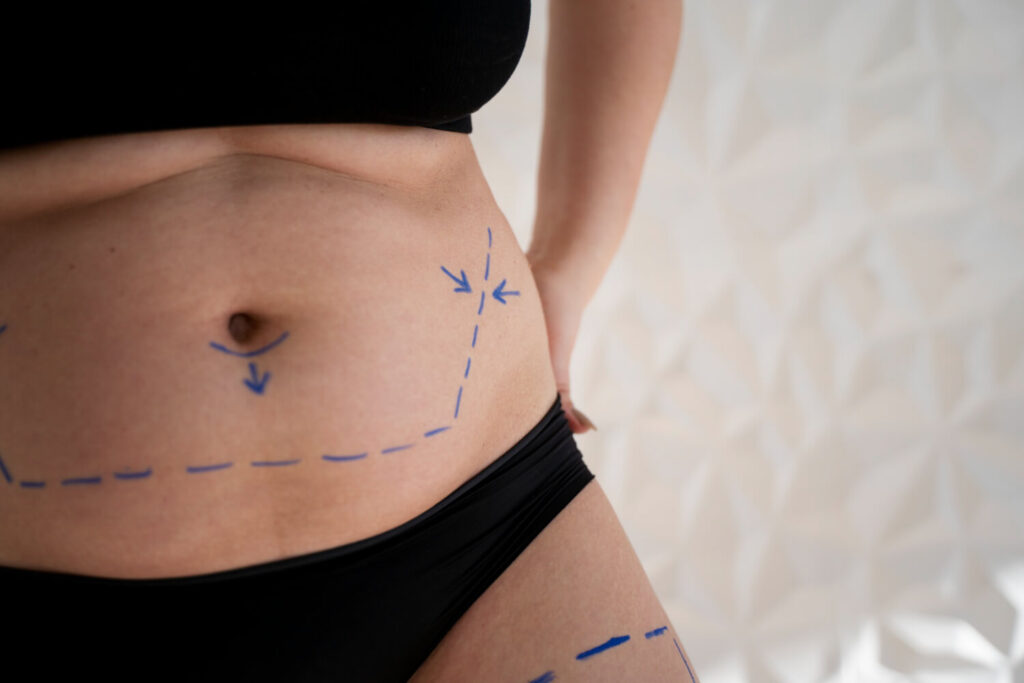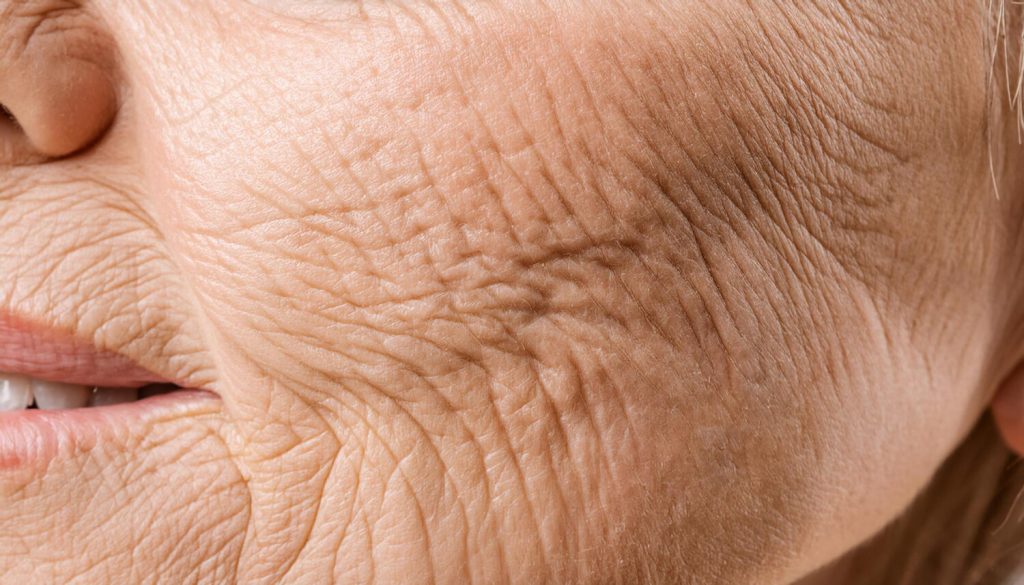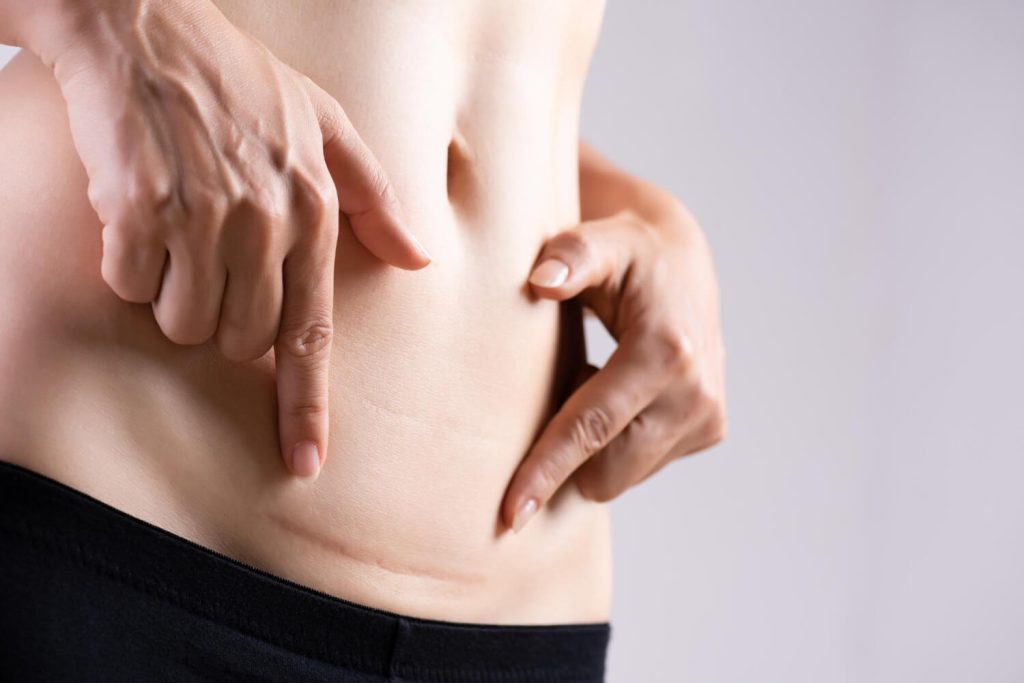Abdominoplasty, commonly known as a “tummy tuck,” is one of the most sought-after plastic surgeries for women who want to regain firmness and the appearance of their abdominal area.
Despite the satisfactory aesthetic results, concerns about scars are common. So, how do you minimize and treat tummy tuck scars? Let’s explore.
What do tummy tuck scars look like?
When discussing tummy tuck scars, it’s important to understand that each person may develop different types of scars. These types vary not only in appearance but also in how the skin heals and responds to the surgical procedure.
Raised Scars
Raised scars are those that sit above the level of the surrounding skin. They can result from improper healing or the body’s response to the healing process.
Although they are visible and may cause discomfort, there are treatments that can help smooth them out, such as using specific creams and laser therapies.
Widened Scars
Widened scars occur when the skin around the scar stretches too much during the healing process. This can happen due to excessive movement or tension on the scar area.
To prevent widened scars, it’s important to follow all your surgeon’s recommendations, including the use of post-operative compression garments.
Keloid Scars
Keloid scars are thick and extend beyond the original incision area. They result from an overproduction of collagen during healing and can be genetically predisposed.
Keloids can be challenging to treat, but corticosteroid injections and laser treatments can help reduce their appearance.
Hypertrophic Scars
Hypertrophic scars are similar to keloids but differ in a crucial aspect: they do not extend beyond the incision area.
They are raised and red but generally become less noticeable over time. Treatments such as silicone sheets and gels can help flatten and lighten these scars.
Hyper and Hypopigmented Scars
Scars can also present changes in skin pigmentation. Hyperpigmented scars are darker than the surrounding skin, while hypopigmented scars are lighter.
Sun exposure can worsen these conditions, so it’s important to protect the area with sunscreen. Topical treatments and chemical peels can help even out the color of the scar.
Tethered Scars
Tethered scars are those that appear “tied down” to the underlying tissue, creating a depression in the skin. They can occur when scar tissue adheres to deeper layers of the skin.
Regular massages on the scar area and treatments like microneedling can help release these adhesions and improve the appearance of the scar.
Understanding the different types of scars allows you to address each one specifically, increasing the chances of achieving a smoother and less visible appearance.
Read more:
👉 Tummy Tuck: Comparing with other abdominal procedures
Where Will My Tummy Tuck Scar Be?
The location of the tummy tuck scar is a common and understandable concern for those considering this surgery.
In a traditional abdominoplasty, the main scar is usually positioned horizontally, just above the pubic line, extending from one hip to the other. This placement allows the scar to be hidden under underwear or a bikini, making it less visible in everyday life.
In addition to the horizontal scar, there may be an additional scar around the navel, especially if the navel needs to be repositioned during the procedure. This scar is typically circular and tends to become less noticeable over time.
In cases of extended abdominoplasty, which involves the removal of skin and fat from larger areas of the abdomen and flanks, the scar may be longer and extend beyond the hips.
Regardless of the type of abdominoplasty, the surgeon will do their best to position the scars in a way that they are discreet and easy to hide under clothing.
It is important to discuss the location and extent of the scars with your surgeon during the pre-operative consultation, so you have clear and realistic expectations about the surgery results.
How will tummy tuck scars look over time?
Understanding how tummy tuck scars evolve over time can help manage expectations and plan appropriate post-operative care. Initially, the scars may appear more visible, but the good news is that they tend to improve significantly over time.
First few months
In the first few months after surgery, the scars tend to be redder and raised. This is a natural response of the body to the healing process.
During this period, it is essential to follow all your surgeon’s recommendations, including avoiding direct sun exposure on the scar area, using silicone sheets or gels, and keeping the area clean and moisturized.
Six months to one year
Between six months and one year after surgery, the scars begin to mature. The redness usually fades, and the scars start to flatten and soften.
This is a good time to continue using topical treatments recommended by your surgeon and, if necessary, consider additional therapies such as scar massages or laser treatments.
One year or more
After one year, tummy tuck scars are usually well-matured. They tend to become thinner and less visible.
The color of the scars also often more closely matches the surrounding skin tone. However, it’s important to remember that every body heals differently, and the final appearance of the scars can vary from person to person.
How to minimize tummy tuck scars
Minimizing tummy tuck scars is a top priority for many individuals considering this surgery.
While some scarring is inevitable, there are several effective strategies to reduce their visibility and improve their appearance over time. Here are some tips to help you minimize tummy tuck scars:
1. Choosing a qualified surgeon: An experienced and well-trained surgeon can make a significant difference in the appearance of scars. Research and choose a certified professional with good recommendations.
2. Advanced surgical techniques: Some surgeons use advanced techniques, such as internal sutures and layered incision closure, which can result in thinner, less visible scars.
3. Post-operative care: Post-operative care is essential for good healing. Keep the area clean and dry, avoid activities that may stretch the scar, and follow all your surgeon’s recommendations. Wearing a post-operative girdle can help reduce tension on the scar.
4. Topical treatments: Topical products, such as silicone gels, scar creams, and silicone sheets, can be effective in improving the appearance of scars. Consult your surgeon about the best option for your case.
5. Sun protection: Sun exposure can darken scars, making them more visible. Use sunscreen on the scar area or keep it covered when outdoors.
6. Treatments for existing scars: If, despite all precautions, you are still not satisfied with the appearance of your scars, there are treatments that can help:
7. Laser therapies: Laser treatments can reduce redness and smooth the texture of scars. This procedure should be performed by a qualified professional.
8. Microneedling: Microneedling is a technique that uses small needles to create micro-injuries in the skin, stimulating collagen production and improving the appearance of scars.
9. Corticosteroid injections: For hypertrophic or keloid scars, corticosteroid injections can help reduce the size and thickness of the scar.
By following these tips and working closely with your surgeon, you can effectively minimize the appearance of tummy tuck scars and enjoy the results of your surgery with greater confidence.
Schedule your consultation today!
Don’t let concerns about scars stop you from achieving the results you desire. Schedule a consultation at Smart Plastic Surgery, the best plastic surgery clinic in Miami.
Our team of specialists is here to answer all your questions and help you plan every step of your procedure with safety and excellence.
Click the button below to book your consultation and find out how we can help you achieve the silhouette of your dreams!



